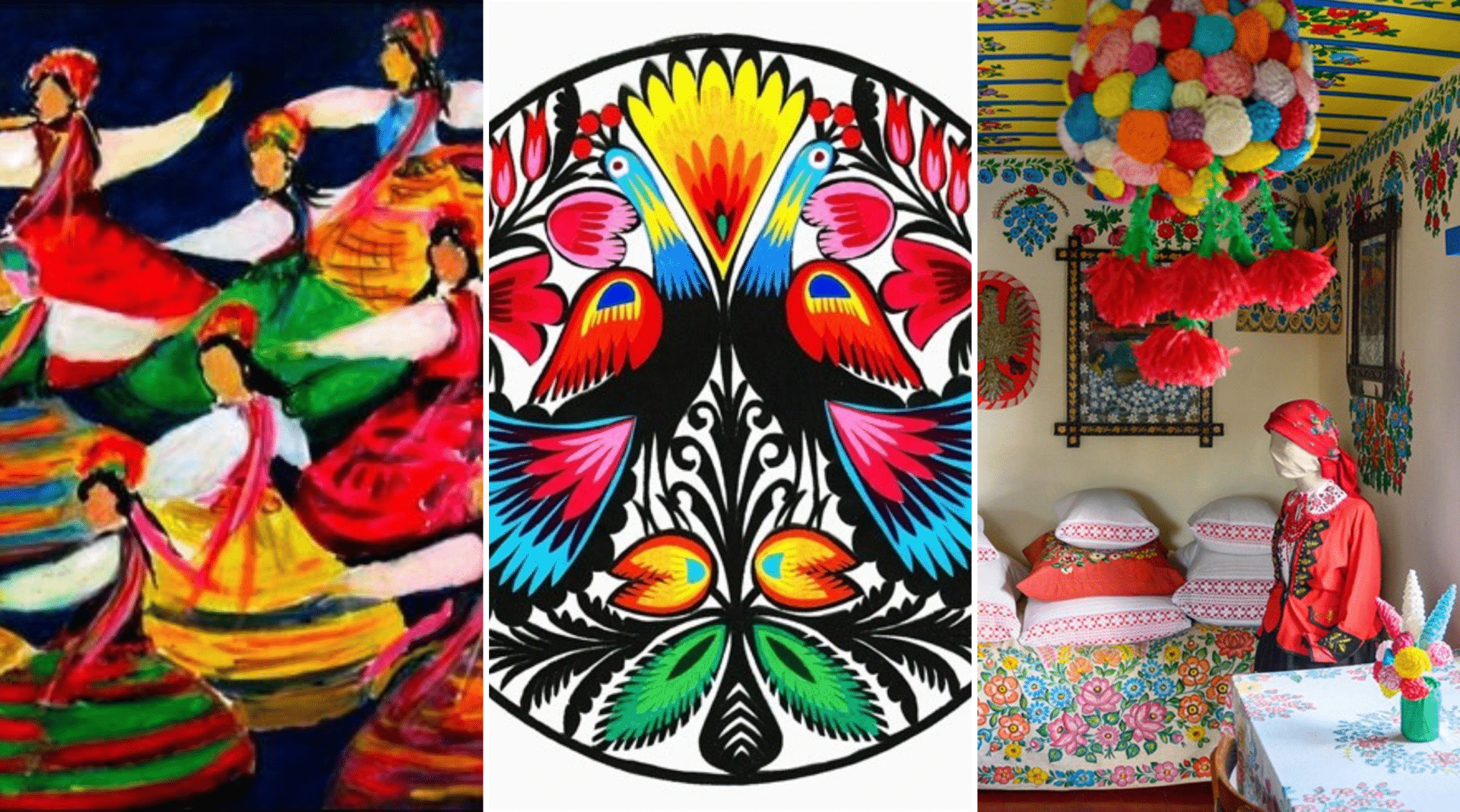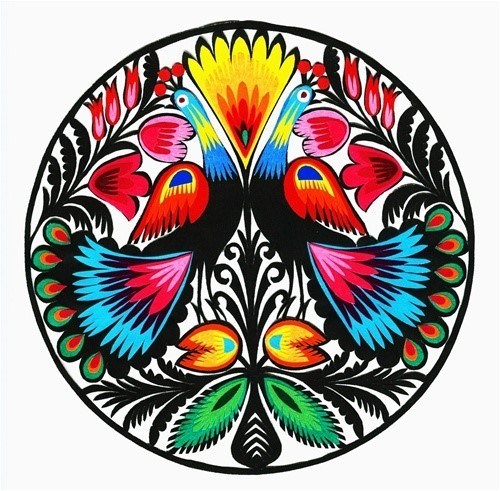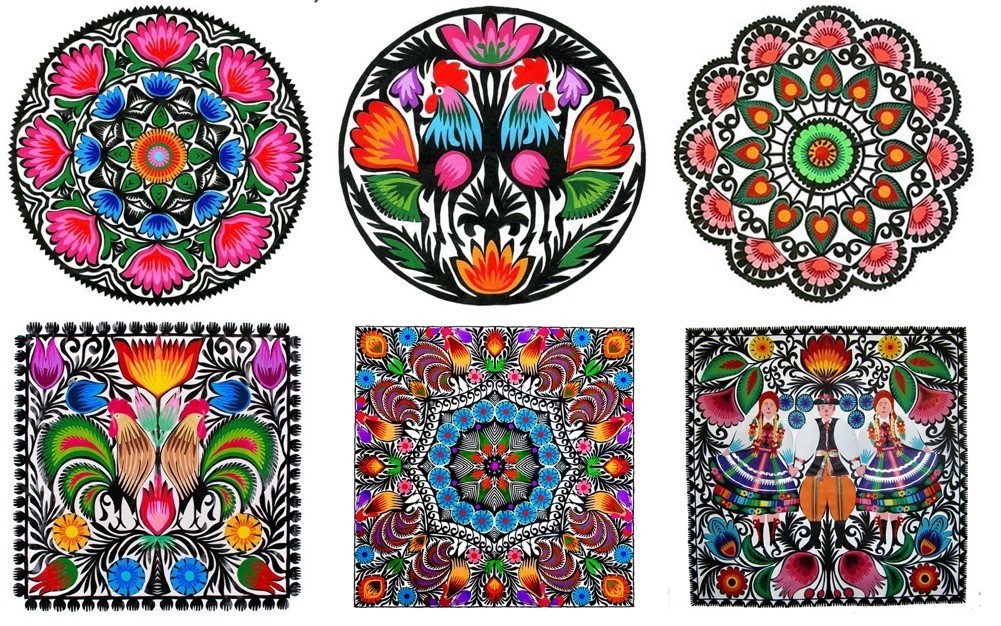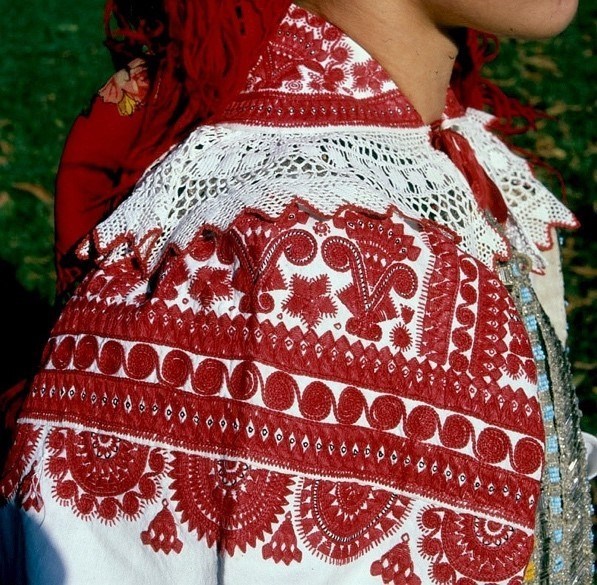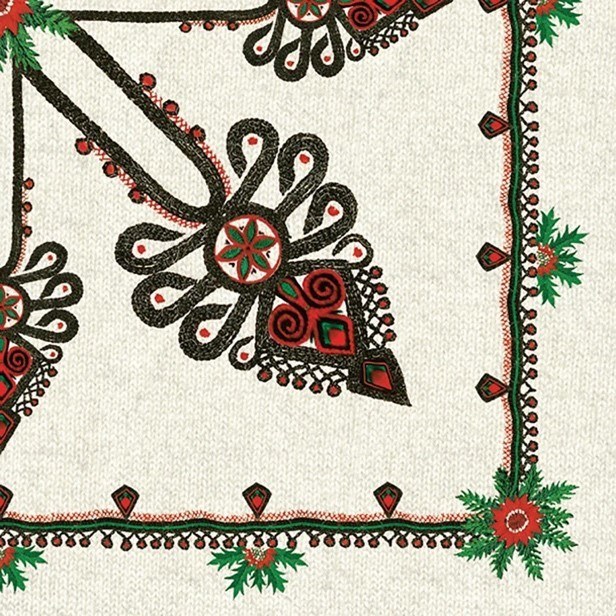Vibrantly coloured fabrics, intriguing patterns and paper cut-outs filled with symbolic imagery of nature and beliefs, all serve as an important part of Polish culture and identity. Packed with colour, join us as we explore examples of Polish folk art…
Wycinanki (paper cut-outs)
Paper-cutting serves as a popular form of folk art in Poland, as well as in other Slavic countries such as Belarus and Ukraine. These cut-outs (or as you would say in Polish ‘wycinanki’) became popular during the mid 19th century and are now known to be one of the more prominent parts of polish folk art.
These cut-outs were traditionally made with large scissors (meant for sheep shearing) and with no stencils or sketches, it’s difficult to imagine how such fine and detailed pieces of art were made! Nature and faith were the main sources of inspiration for these cut-outs. Traditionally used to decorate homes, they enlivened interiors with their colourful patterns.
Embroidery
Another key component of polish folk art is embroidery, most commonly used for dresses as they strengthened the construction of a garment and characterised differences in class, region and urban or rural environments. The designs were featured on formal dresses for weddings and other special occasions. In areas where the economy was based on natural resources, costumes were of a much simpler design. The motifs often had geometric or floral designs with a single colour thread. These designs also carry with themselves symbolic imagery, differing from each region. For example, in the Carpathian area, ‘parzenica’ was a well-known symbol of manhood and in Krakow the ‘tree of life’ was popular, symbolising plants and unending fertility.
We hope you’ve enjoyed exploring these examples of Polish folk art. To discover more embellished textiles, visit our blog post: Exquisite Embroidery.

